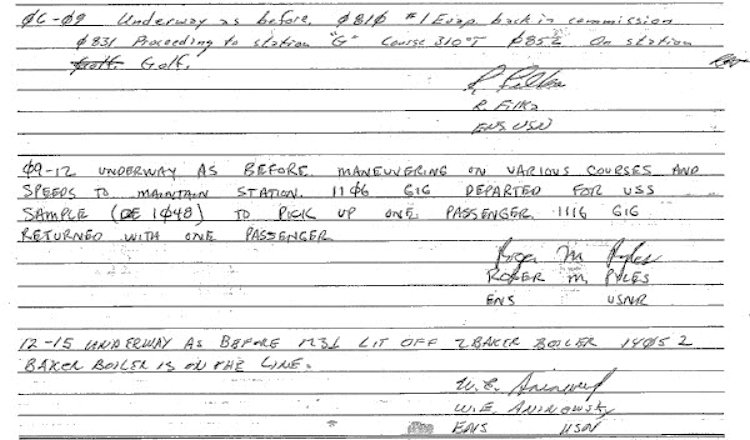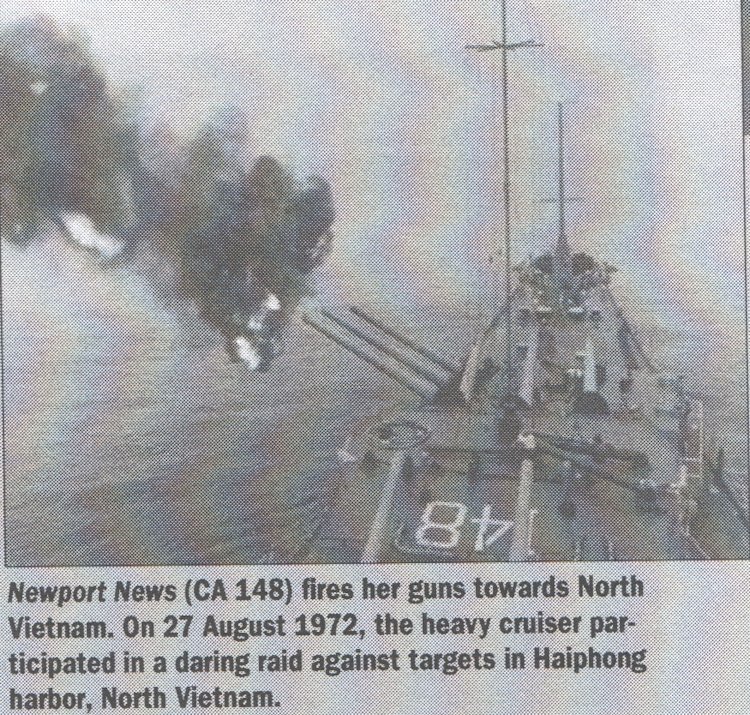

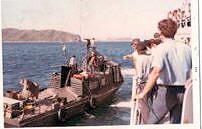



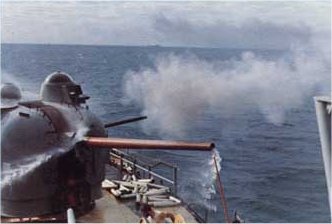  | Lincoln Journal Star20,000-man Force Nears Quang Tri In Second Day of So. Viet OffensiveJune 29, 1972 |
| Saigon (UPI) – A task force of more than 20,000 South Vietnamese troops backed by U.S. air and naval bombardments drove through North Vietnamese defenders Thursday to within 5 miles of Quang Tri City.
The 20,000-man task force was joined by 1,000 fresh troops flown in from Saigon aboard American helicopters and landed near the coast. Spearheads of the task force were reported to have advanced up to 7 miles in a three-pronged offensive. Quang Tri City fell to the Communist spring offensive on May 1 and President Nguyen Van Thieu ordered his troops to recapture all lost territory. Field reports said the advancing columns have killed at least 350 North Vietnamese soldiers so far in the 2-day drive and that government casualties were 15 dead and 50 wounded. Communist forces in Quang Tri, said to be remnants of four division battered by constant U.S. air strikes, were estimated Wednesday at about 20,000 men. Brig. Gen. Bui Thi Lan, commander of the South Vietnam marine division that joined paratroopers and Black Panther commandos in the offensive, said Quang Tri City could be captured within four days if his men were ordered to do so. With the South Vietnamese offensive pushing into Quang Tri there was no letup in the air war against North Vietnam. U.S. spokesmen said American planes flew 240 sorties Wednesday and hit an air base 30 miles south of the China border. U.S. combat casualties fell last week to the lowest level in more than 3 months. Two men were killed and 22 wounded, the U.S. command reported Thursday. A spokesman said the number of Americans missing in action, however, rose by 21 last week to a total of 1,630. “Most of our missing have been pilots,” he said. |
  | Lincoln Journal StarSouth Viets Within Mile of Quang TriJune 30, 1972 |
| Saigon (UPI) – South Vietnamese paratroopers flown into battle Friday by U.S. helicopters battled to within a mile of Quang Tri City, front dispatches reported. The dispatches said they destroyed eight North Vietnamese tanks in heavy fighting in the suburbs.
President Nguyen Van Thieu visited a forward command post at Hai Lang, only six miles from Quang Tri, and reliable but unofficial sources said he ordered his men to capture Quang Tri City Friday night.. However he told newsmen capture of the city itself was ‘not important’. The Two battalions of paratroopers were landed by American helicopters only 3 miles from the provincial capital after B52s had dropped tons of bombs on the heavily-dug-in Communists. The troops pushed forward tow miles by foot to La Vang, a suburb only a mile southwest of Quang Tri, the front dispatches said. There was heavy air support for the advancing South Vietnamese, part of a 20,000-man task force which drove into Quang Tri Province three days ago under orders in capture it within a three-month period. The province fell to the Communist spring offensive on May 1. In an informal conference at Phu Bai, five miles south of Hue, before flying to the front, Thieu told newsmen in English: “You have put too much responsibility on the city of Quang Tri. The city of Quang Tri is not important as the province of Quang Tri and the four North Vietnamese army division there.” “Our troops have been given the order to destroy the 4 NVA divisions and to capture all of the province of Quang Tri. Then we will not have any problems taking the city of Quang Tri.” Thieu, who also visited U.S. 7th Fleet warships bombarding Communist positions in the province, said, “things have gone very well for our men here and I am very confident for the coming days.” While South Vietnamese troops drove northward in their efforts to recapture the province, only one to fall in the spring offensive, other North Vietnamese and Viet Cong units developed a new threat to Hue. Allied officers said a company of government infantrymen abandoned Artillery Base Checkmate 12 miles southwest of Hue early Friday after a night of intense Communist infantry and artillery attacks. U.S. fighters and bombers hit the base and the surrounding area Friday in hopes of trapping that attacking force estimated at one battalion (400 to 600 men). |




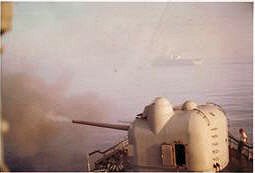
  | Destroyers Shell Sampans2 Phantoms Shot Down; Crews Not RescuedJuly 2, 1972 |
| Saigon (UPI) – U.S. Navy destroyers have shelled Communist junks and sampans unloading a foreign freighter one mile off the North Vietnamese coast, destroying 3 of the boats and damaging another, the U.S. command said today.
Spokesman declined to identify the nationality of the ocean-going freighter, which was unloading on the shore because it was unable to enter any of the seven major North Vietnamese ports mined by U.S. planes earlier. The freighter was not fired upon. The guided missile destroyer Berkeley and the destroyers Gurke and Everett F. Larson took part in the shelling which occurred last Thursday. It was the first time the command has admitted firing on Communist boats unloading supplies. The command also said today two U.S. Air Force A4 Phantoms have been shot down over North Vietnam and an American helicopter has been downed over Quang Tri province in South Vietnam. The two fighter-bombers were shot down last Saturday – one 130 miles northwest of Hanoi and on 30 miles northwest of the North Vietnamese capital. None of the 4 crewmen were rescued. The command said one crewman was injured when the OH6 Cayuse helicopter was shot down eight miles northeast of Quang Tri City. Communist gunners lobbed 20 rockets and artillery rounds into Hue today, killing 8 civilians and wounding at least 2 soldiers. It was the first rocket attack on the old imperial capital since the current Communist offensive began March 30. More than 25 miles north of Hue, torrential rains bogged down a 20,000-man South Vietnamese push to recapture Quang Tri from the North Vietnamese. Far to the South, Viet Cong guerrillas closed in on a provincial capital within a 3-hour drive of Saigon and government forces reported a 24-hour artillery-ground battle near An Loc, 60 miles north of Saigon. U.S. Maj. Gen. Alexander Haig, chief military adviser to White House official Henry Kissinger, arrived in Hue soon after the barrage. Haig is on a fact-finding mission for Kissinger and President Nixon. Field reports said most of the shells fired at Hue appeared to be from a Soviet-made 122mm field gun which has never been used extensively in Vietnam. The artillery piece fires a 23-pound shell and has a range of 13 miles. A dozen of the same type shells were fired against Camp Eagle, base camp for the South Vietnamese 1st Infantry Division just outside Hue. |





  | Saigon (UPI)So. Viet Troops Enter Quang Tri, Find It LeveledJuly 5, 1972 |
| Saigon (UPI) – A 1,200-man South Vietnamese force moved into Quang Tri city Wednesday, set up a command post and fanned out through the ruined city’s business and residential districts. However government spokesmen said they would not list the city as recaptured until government troops controlled the walled citadel in the center of the town.
Military sources said the troops met only light resistance but no attempt was made to storm the citadel, the possible Communist headquarters. A 20,000-man South Vietnamese task force moved north into Quang Tri province more than one week ago. So fare, fighting has been relatively light and allied officers said they do not know where the estimated 48,000 Communists who took the province May 1 are hiding. The provincial capital has been leveled by bomb in attacks since the Communists captured the province. While the lead elements moved into the city with little resistance South Vietnamese marines seven miles southeast of Quang Tri city met with a heavy North Vietnamese counterattack from a battalion supported b y 15 tanks. The marines reported no tanks knocked out but said 48 communists were killed with government casualties placed at nine dead and 16 wounded. Two miles southeast of Quang Tri city at sundown Tuesday, a battalion of about 500 Communists attacked government troops in and assault led by 18 tanks and at about the same time, another battalion attacked seven miles east of the city. No casualty reports were available on either skirmish. Tuesday, U.S. warplanes flying path clearing missions for the paratroop advance accidentally bombed a government position, killing 10 solider and wounding 30 others. The U.S. Command said the incident, the first of its kind since the government thrust into the province began, occurred 5 miles southeast of the city. The command had few other details. In the air war over North Vietnam, the U.S. Command said Wednesday U.S. jet fighter-bombers flew 320 mission Tuesday, hitting three major military targets within 4 miles of Hanoi and blasting a big military air base and rail yard further from the capital city. The command said U.S. Air Force F4 Phantom fighter-bombers using laser-guided ‘smart’ bombs hit the Quynh Loi supply depot 3 miles south of Hanoi. The Hanoi military vehicle depot four miles south of the city and the Hanoi vehicle repair facility. Spokesmen said the 320 raids were the most over the north in 8 days. Communist gunner slammed 5 rockets into Hue early Wednesday. The attack was the fourth in as many days on Hue. 10 miles west of Hue Tuesday, South Vietnamese troops backed by artillery and allied air strikes fought off a North Vietnamese attack and reported killing 67 Communists. |





















 n the ground war, more heavy fighting was reported Friday on South Vietnam's northern front, where 20,000 Saigon troops are on a drive to retake Quang Tri Province, which fell to the North Vietnamese May 1.
n the ground war, more heavy fighting was reported Friday on South Vietnam's northern front, where 20,000 Saigon troops are on a drive to retake Quang Tri Province, which fell to the North Vietnamese May 1.


  | Lincoln Journal Star'Fat Albert’ Said EffectiveNew, One-ton Video BombJuly 14, 1972 |
| Saigon (AP) – The U.S. Navy announced Friday the introduction of a new, on-ton video bomb called “Fat Albert” into the air war against North Vietnam and termed it highly effective.
The weapon is an improved version of the “Walleye” television bomb and has been in use for the past month, the Navy said. Capt. Marland W., Towsend, commanding officer of the carrier Kitty Hawk, said the first six Fat Alberts released scored direct hits against their targets and reduced the risk that American pilot would be hit by ground fire. Townsend said four bridges were downed and two military supply buildings were destroyed by the bombs. The Fat Albert, named by fliers aboard the Kitty Hawk, is twice as powerful as the Walleye had has a television camera in the nose to direct the bomb to the target. The U.S. Command announced, meanwhile, that U.S. pilots carried out 270 tactical air strikes against targets inside North Vietnam Tuesday. The Navy said its pilots leveled three coastal defense sites of the northeast and southeast of the port city of Vinh with laser guided bombs. Other Navy planes from the 3 carriers in the Tonkin Gulf hit hard for the second successive day in the Hanoi-Haiphong region. Pilots said they sank three barges on a small waterway 19 miles northeast of Haiphong, and in attacks against coastal transshipment points 20 miles northeast of Haiphong, triggered six large secondary explosions and two sustained fires. Radio Hanoi claimed that 14 U.S. warplanes bombed a section of dikes in North Vietnam’s Hai Hung Province on Tuesday and that a large number of Western newsmen saw it. The broadcast said the newsmen had been taken to the area near Hiep Ca and Nan Hung villages to see damage allegedly done to dikes there by U.S. bombs two days earlier. In the ground war, more heavy fighting was reported Friday on South Vietnam’s northern front, where 20,000 Saigon troops are on a drive to retake Quang Tri Province, which fell to the North Vietnamese May 1. The Saigon command said its troops had not entered the Quang Tri City limits, but reported a series of battles ranging from two to 3 ½ miles northeast of the provincial capital. |





  | Saigon (UPI)Explosions Rock U.S. DestroyerJuly 18, 1972 |
| Saigon (UPI) – Two underwater explosions rocked the destroyer USS Warrington Monday off North Vietnam, the U.S. Command said Tuesday.
One crewman was slightly injured, the command said. He was given first aid and returned to duty. The Warrington left the scene, about 20 miles offshore from the North Vietnamese panhandle, under its own power. But after its engine room began to flood, it was taken under tow, though the flooding was brought under control. The destroyer was enroute Tuesday to Subic Bay in the Philippines for repairs. Other naval ships joined with U.S. Air Force B52 bombers and allied tactical aircraft and helicopters Tuesday to bombard North Vietnamese reinforcements trying to reach Quang Tri City. Military spokesmen said the B52s pounded Communist staging areas within 3 miles of the city Monday night. A U.S. Command spokesman said 42 B52s dropped more than 1,000 tons of explosives on suspected Communist positions 3 to 14 miles west, north and south of the embattled city. About 2,500 North Vietnamese troops were spotted last week in northwestern Quang Tri Province, and an estimated 15,000 Communist soldiers are believed to have been pulled from the battlefields in Laos to North Vietnam. Allied officers expressed fears the fresh troops may be thrown in the battle for Quang Tri. Radio Hanoi, monitored in Saigon, said 2 U.S. jets were shot down Tuesday over North Vietnam. The report, which brings to 3,749 the number of U.S. warplanes Hanoi claims to have shot down since 1964, did not mention the fate of the crews. The U.S. Command said 996 planes have been shot down over the North during the same period. With U.S. air support, the South Vietnamese Army begins a drive to recapture Binh Dinh province and its cities. The battles last until September 15, by which time Quang Tri has been reduced to rubble. Nevertheless, the NVA retains control of the northern part of the province. |



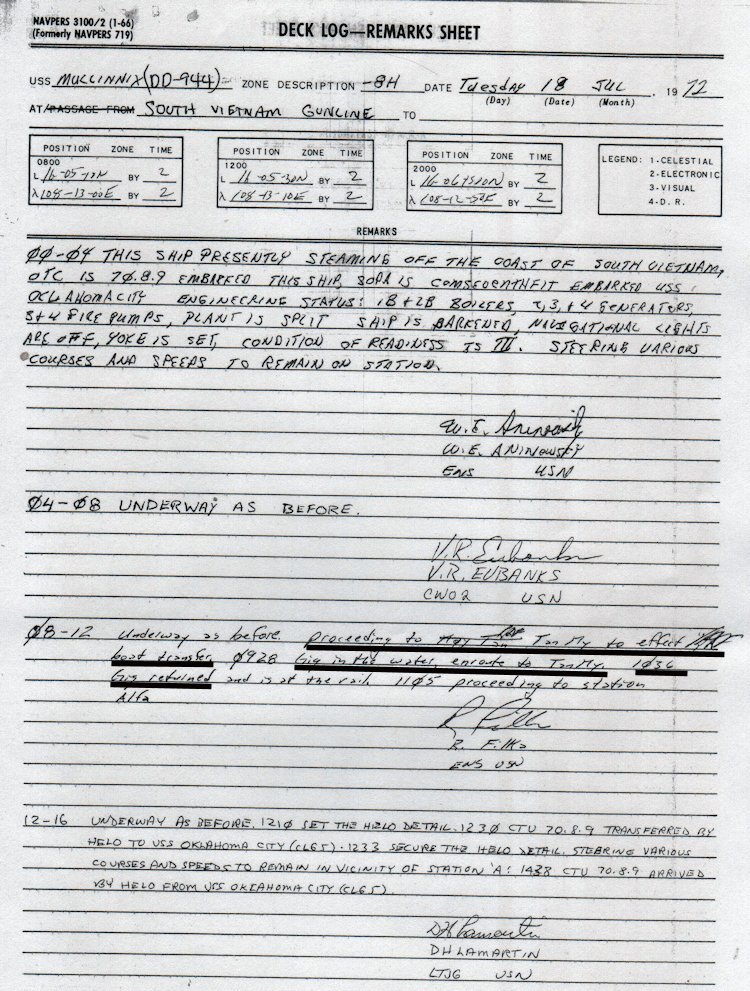
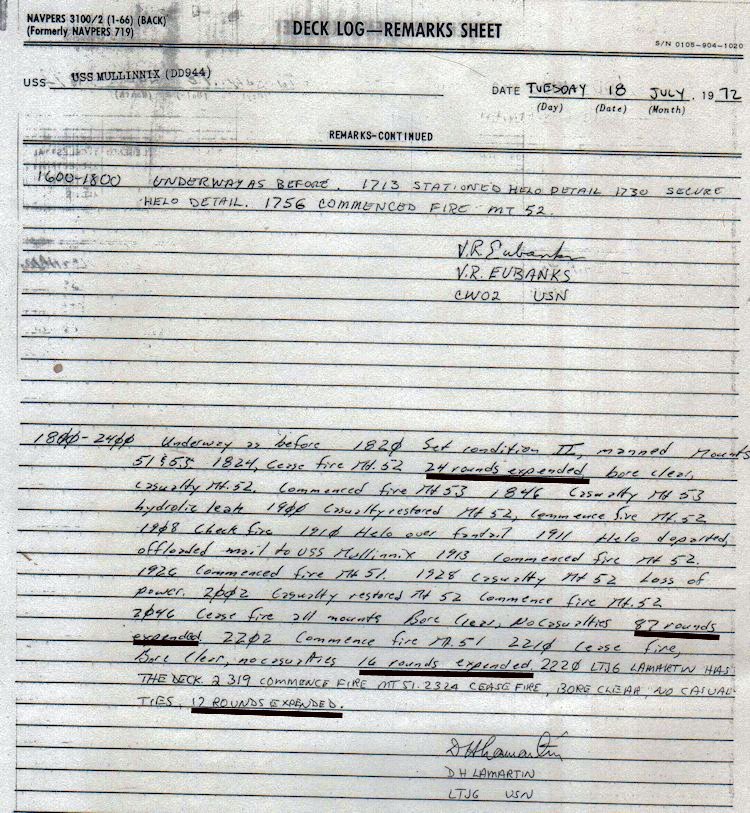
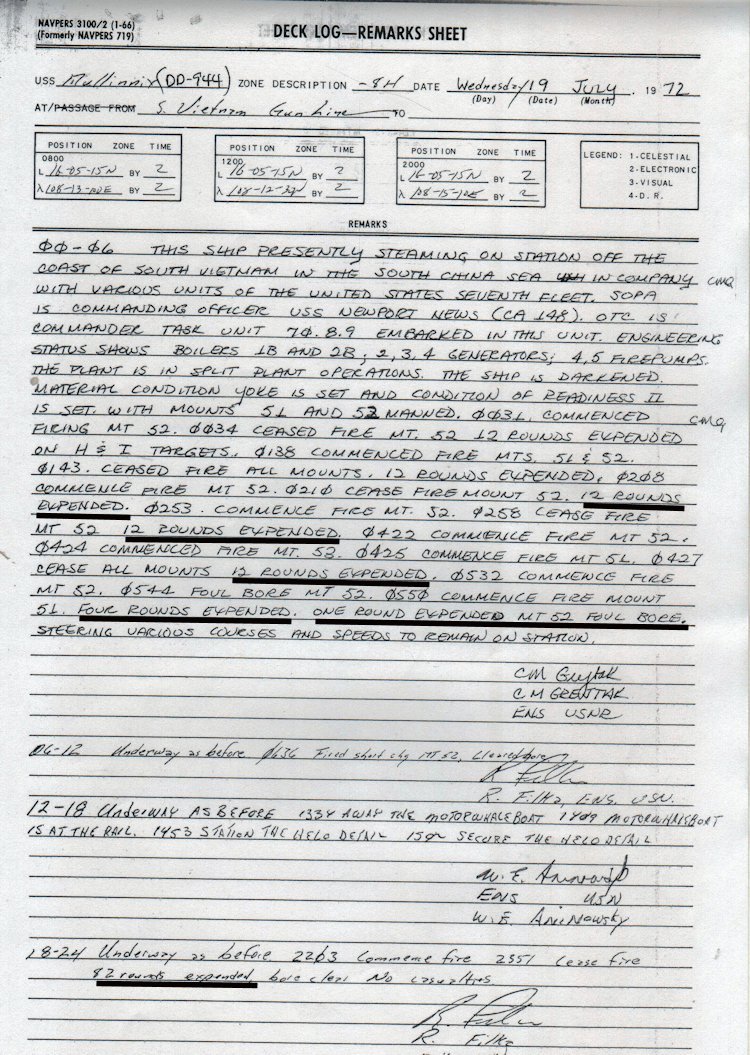

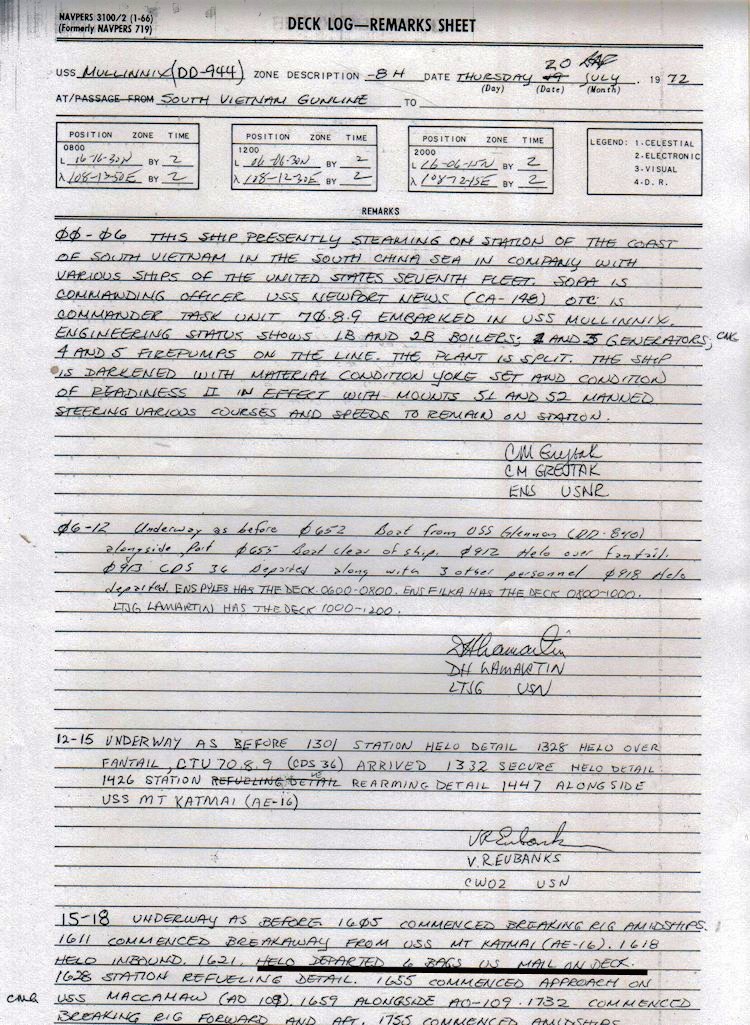
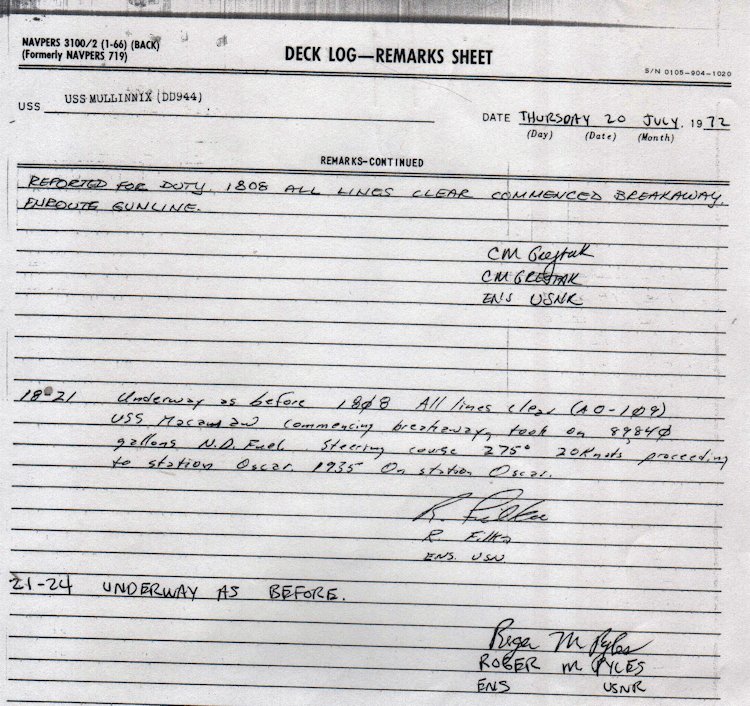
  | Lincoln Journal StarU.S. Helicopter Gunships Raid North Vietnam CoastThursday, July 20, 1972 |
| (Compiled From News Wires): U.S. Marine helicopter gunships raided the North Vietnamese coast Wednesday, the second time in the war helicopters have been used in offensive operations over the North, the U.S. Command said Thursday.
Military sources said about six AH1 Sea Cobras flying off the USS Denver LPD-9 from the U.S. 7th Fleet offshore reported destroying three water craft and damaging six others 66 miles north of the Demilitarized Zone (DMZ, separating the two Vietnams. The copters fired rockets and 20mm cannon shells). In fighting in South Vietnam, Communist gunners Wednesday shot down a U.S. jet-fighter-bomber, and two U.S. helicopter supporting the South Vietnamese drive to recapture Quang Tri City Four Americans were wounded. Spokesmen said the only other time choppers flew into North Vietnam was the November, 1971 raid on the Son Tay prisoner of war camp, which was found empty. Elsewhere in the air war Wednesday, U.S. Air Force F4 Phantom jets firing guided bombs dropped two of the five spans of the Cao Hung railroad bridge 50 miles northeast of Hanoi and 15 miles southwest of China, the U.S. Command said. In Quang Tri, meanwhile, South Vietnamese paratroopers advanced to within 50 yards of the Citadel despite a counterattack by North Vietnamese infantry and tanks. But informants said there would be no attempt to storm the walled fortress until more government troops reach forward positions and more North Vietnamese tanks are knocked out. American casualties in the Vietnam war last week included eight killed in action, five dead from non-hostile causes, 14 missing or captured and 26 wounded, the U.S. Command announced in its weekly summary Thursday. South Vietnamese losses were put at 837 killed, compared to 661 for the previous week, and 2,367 wounded, compared to 2,585. The number of North Vietnamese and Viet Cong killed dropped from 3,320 to 2,871. North and South Vietnam, for opposing reasons, Thursday observed the 18th anniversary of the partition of Vietnam. The South Vietnamese call it a national day of shame. The North vowed to fight “until final victory for total liberation of South Vietnam” and reunification of the country. July 20 is the only modern anniversary commemorated by both North and South Vietnam. In 1954 the Geneva accords were signed dividing North and South Vietnam at the 17th Parallel. |

  | Saigon (UPI)July 21, 1972 |
21 July Saigon (UPI) -  outh Vietnamese troops, backed by artillery, napalm-dropping American warplanes and offshore gunfire fought Friday to keep North Vietnamese soldiers from cutting Highway 1, the vital supply link between Hue and 20,000 government troops trying to drive the Communists out of Quang Tri Province. outh Vietnamese troops, backed by artillery, napalm-dropping American warplanes and offshore gunfire fought Friday to keep North Vietnamese soldiers from cutting Highway 1, the vital supply link between Hue and 20,000 government troops trying to drive the Communists out of Quang Tri Province.
Field commanders told UPI correspondent Donald Davis that 1,000 Communist troops apparently outflanked government soldiers guarding the highway and at least temporarily severed the two-lane blacktop road. The Communists want to control the highway and cut South Vietnamese supply lines, forcing allied officials to re-supply the soldiers by air. Government troops moved into the province three weeks ago to try to drive the Communists back into North Vietnam. The North Vietnamese overran the province May 1, one month after the current offensive began. Some 2000 miles to the south, a 7,500-man South Vietnamese task force recaptured Bong Son, a district (county) capital, in the coastal province of Binh Dinh. The Communists also took over most of Binh Dinh soon after the current offensive started on March 30. Most of the fighting along the northern front was concentrated near the village of Phong Dien, just south of the Quang Tri Province border. The battle along Highway 1 was the same spot where two members of an American Broadcasting Company (ABC) film crew were feared killed Thursday in a North Vietnamese ambush. The U.S. command reported an American adviser was killed and two others wounded Thursday night when North Vietnamese rickets hit a South Vietnamese marine unit near Quang Tri City. |

  | Lincoln Journal StarSo. Viets Defend Supply LinkFriday, July 21, 1972 |
| Saigon (UPI) – South Vietnamese troops, backed by artillery, napalm-dropping American warplanes and offshore gunfire fought Friday to keep North Vietnamese soldiers from cutting Highway 1, the vital supply link between Hue and 20,000 government troops trying to drive the Communists out of Quang Tri Province.
Field commanders told UPI correspondent Donald Davis that 1,000 Communist troops apparently outflanked government soldiers guarding the highway and at least temporarily severed the two-lane blacktop road. The Communists want to control the highway and cut South Vietnamese supply lines, forcing allied officials to re-supply the soldiers by air. Government troops moved into the province three weeks ago to try to drive the Communists back into North Vietnam. The North Vietnamese overran the province May 1, one month after the current offensive began. Some 2000 miles to the south, a 7,500-man South Vietnamese task force recaptured Bong Son, a district (county) capital, in the coastal province of Binh Dinh. The Communists also took over most of Binh Dinh soon after the current offensive started on March 30. Most of the fighting along the northern front was concentrated near the village of Phong Dien, just south of the Quang Tri Province border. The battle along Highway 1 was the same spot where two members of an American Broadcasting Company (ABC) film crew were feared killed Thursday in a North Vietnamese ambush. The U.S. command reported an American adviser was killed and two others wounded Thursday night when North Vietnamese rickets hit a South Vietnamese marine unit near Quang Tri City. |








  | Lincoln Journal StarSo. Viets Fight Way to Quang Tri CitadelTuesday, July 25, 1972 |
| Compiled from News Wires: Saigon – South Vietnamese troops made major advances on two fronts Monday, fighting their way to the walls of Quang Tri Citadel in the northern counteroffensive and recapturing a second district town on the central coast.
In the air war, American jets bombed the southern sector of Hanoi on Sunday for the second successive day, setting a battery plant on fire and triggering a dozen explosions, the U.S. Command reported. Pilots said smoke rose 4,000 feet over the North Vietnamese capital. AP correspondent Dennis Neeld reported from Quang Tri that government paratroopers pushed through a hail of North Vietnamese artillery on the approaches to the Citadel, then encountered withering fire through two breaches in the 40-foot walls of the 19th century fortress. Meanwhile, in Binh Dinh Province, on the central coast, more than 1,000 South Vietnamese rangers moving on foot and by helicopter recaptured the district town of Tam Quan, AP photographer Neal Ulevich reported. He said the North Vietnamese put up only light resistance. As the South Vietnamese force moved in, at least 2,000 civilians emerged cautiously from underground bunkers. The troops rounded them up for processing. Other war-related reports: From Washington – Pentagon sources report that fresh supplies of motor fuel apparently have started flowing into North Vietnam through a new pipeline from South China. In addition, U.S. reconnaissance planes recently located a new petroleum storage depot tying into the pipeline. From Phnom Pehn – Cambodian and South Vietnamese forces reentered Kompong forces since April, after Allied fighter planes bombarded the Hwy. 1 market town late Sunday night, field reports said. From Vientiane, Laos – Civilians in North Vietnam show high moral and good humor despite renewed U.S. bombings. Two Americans who visited there, John A. Sullivan and Dr. George A. Perera, staff members of the American Friends Service Committee, a Quaker service organization, said they sought the safety of bomb shelters 34 times during their seven-day trip to North Vietnam to deliver surgical equipment. From Saigon – Four more newsmen have been killed in Vietnam, bringing the death toll to sic in the four-month-old North Vietnamese offensive. They are: Gerard Hebert, Canadian photographer; Terence Khoo and Sam Kai-Faye, Singapore TV cameramen, and Tran Van Nghia, South Vietnamese Army photographer. |



















